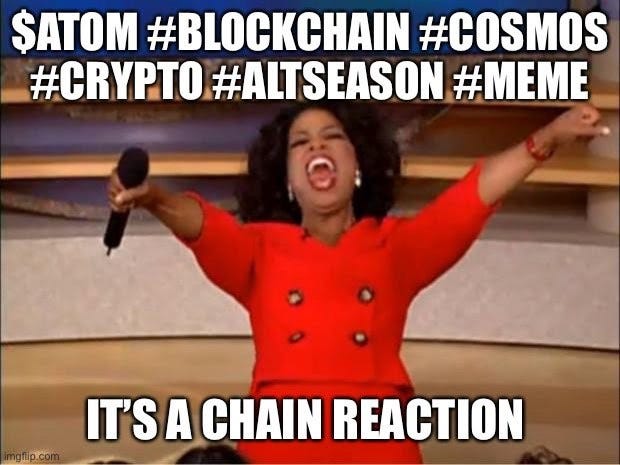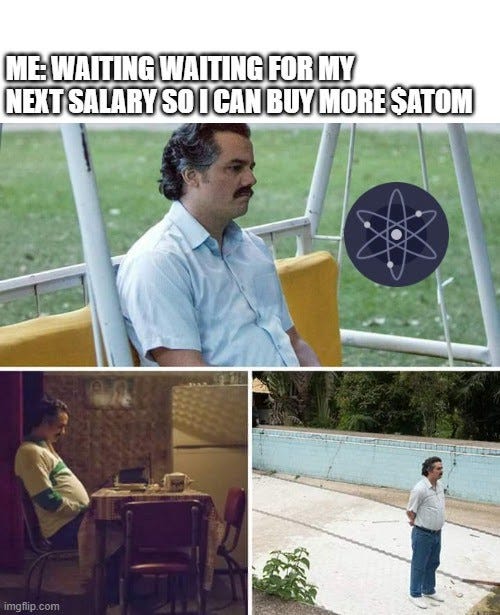Life’s Better When We’re Connected: IBC Ecosystem Overview
Are all blockchain ‘BUIDLers’ really there for the tech or the money? Many people have asked this question as we continue to experience…
Are all blockchain ‘BUIDLers’ really there for the tech or the money? Many people have asked this question as we continue to experience chain-specific gatekeeping that seems to benefit only the early whales in crypto and DeFi spaces.
Unlike newbies and new entrants, early buyers who are privileged to participate in seed rounds and pre-sales seem not to be worried about rising gas fees. Most of the L1s are already experiencing rising gas fees, but bridging is an awesome solution. However, making it easy to communicate and transfer assets is what will bring value to these blockchains.
Inter Blockchain Communication (IBC)
A simple search on the internet for ‘Cosmos blockchain’ will most likely bring tons of results that mention Inter Blockchain Communication (IBC). What is IBC, and how is it valuable to the Cosmos ecosystem?
“It is a protocol that allows different blockchains to talk to each other”. Communication and making this a reality is somehow a complicated affair if we analyze the technicalities and conditions that must be met. For the sake of today’s discussion, we will discuss how IBC making it easy to transfer tokens and other data in a trusted and frictionless manner is a big deal to the blockchain community.
How we arrived here
There are many blockchains today since Bitcoin was introduced to us in 2009. These blockchains come with different value propositions, ideologies, advocates, and consensus methods. Most of these blockchains exist in close-ended silos and they are unable to communicate with each other. This is not a model that can be sustained in a world that is moving towards Web 3.0.
What we have at the moment can be better explained when we look at different countries. Country A might be a massive producer of food while Country B is a manufacturer. The two countries must devise ways of communicating and exchanging value if they both want to prosper.
How IBC works
IBC comes to bridge the gap and opens up a world of possibilities. Blockchains will be able to interoperate, transfer value, interchange assets, and connect, and all this is possible without facing the scaling issues that are common on the world’s biggest blockchains.
Inter Blockchain Communication provides a communication-oriented, end-to-end, stateful protocol for reliable and authenticated communication between off-chain protocols or heterogenous blockchains. IBC accommodates both dynamic and known validator topologies.
IBC can be applied to build a wide range of cross-chain applications, including; non-fungible token transfers, token transfers, delegate calls between two chains (interchain accounts), and oracle data feeds.
What is Cosmos?
Nicknamed ‘the internet of blockchains’, Cosmos is a decentralized network of interoperable and independent blockchains that exchange tokens and information between each other permissionlessly. Cosmos was created to address some of the issues that modern blockchains face. These issues include scalability, governance, and usability.
This network provides developers with tools that will help them quickly develop independent blockchains for various use cases and enable them to communicate. The Cosmos ecosystem has independent blockchains known as ‘zones’ and is powered by the proof-of-stake BFT consensus algorithm created by Tendermint, the core developer behind Cosmos blockchain.
With a Byzantine fault-tolerant consensus algorithm, a network will reach consensus even if some nodes act maliciously or fail. The Cosmos network is wide, and Cosmos Hub was the first blockchain to be launched.
$ATOM
$ATOM is the native token for Cosmos Hub. This token is used for transaction fees, as a governance voting mechanism, and for staking. As of this writing, ATOM is the 29th largest cryptocurrency based on data from Coingecko.com. The coin has a market cap of over $6 billion and is trading at $21.35.
How IBC creates value for Cosmos Hub
Scalability
This has so far been the biggest challenge on Ethereum as the network has already hit 99.15% capacity. Cosmos is solving the lack of interoperability through IBC and allows different chains to communicate and exchange values while avoiding high gas fees.
Sovereignty
Different blockchains have different rules and propositions. IBC creates a middle ground where you choose how sovereign you want to be, your own systems, and boundaries. If you hold certain assets, you must understand the responsibilities that come with it.
Drives value for $ATOM
Cosmos Hub is meant to be a service provider to all the chains connected to it. As these chains enable IBC, the $ATOM community is already armed with incentives that attract more chains to transfer assets through it.
Gravity DEX brings DeFi to Cosmos
The DEX allows token-holders on any blockchain that is IBC enabled to send tokens to the Gravity DEX so that they can earn yields through providing liquidity for swappers or swapping for other IBC tokens.
Wrapping up
The Inter-Blockchain Communication protocol has already connected more than 25 blockchains such as Crypto.org, Terra, Osmosis, and Cosmos Hub to the Cosmos ecosystem. With over 5.8 million transfers recorded on IBC in just 8 months, we can only wait and see how this new protocol will transform the DeFi and entire blockchain space.
In 2022, Cosmos will connect with more chains such as Polkadot, Hyperledger, Celo, and Bitcoin.






